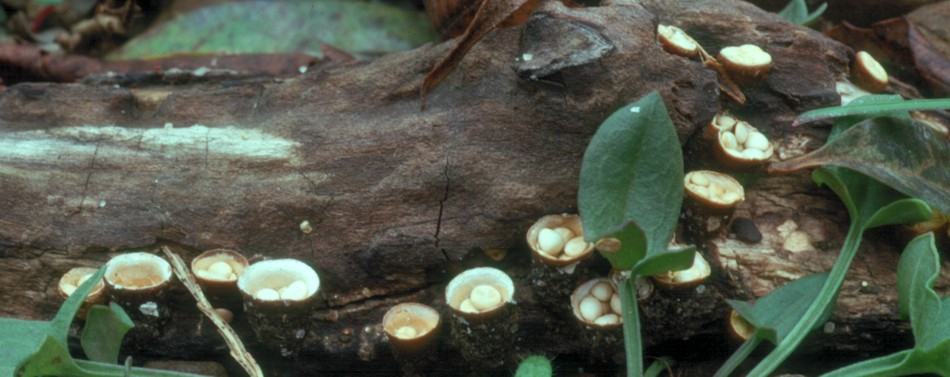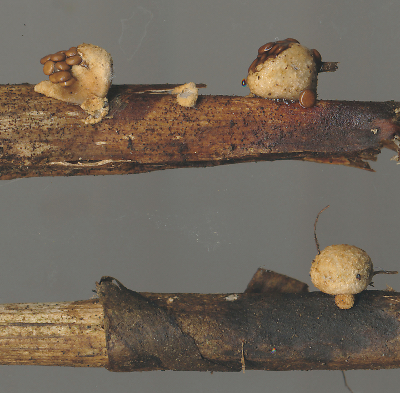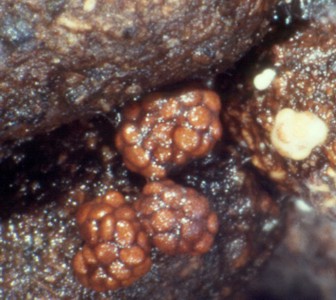Home >> Diversity and classification >> True fungi >> Dikarya >> Basidiomycota >> Agaricomycotina >> Gasteromycetes >> Birds' nest fungi
BIRDS' NEST FUNGI

From the above picture of Crucibulum vulgare it is not too difficult to guess why the bird's nest fungi are called bird's nest fungi. The basidiomata of these fungi are usually quite small and remain closed until maturity. The basidia and basidiospores develop within special structures called peridioles. When the basidiomata are mature they open to reveal the cluster of peridioles and look much like a bird's next containing a clutch of eggs. Most bird's nest fungi grow in forests or other areas where there is some vegetation above them because they depend upon large drops of water falling into their cup-like basidiomata. When a drop hits them the peridioles are propelled out with considerable force and land some distance away from the parent. Dr. Harold Brodie, author of the charming book entitled The Bird's Nest Fungi described experiments he and Professor Buller did on artificial bird's nest fungi and found that the angle of the walls is critical to the distance the peridioles can travel. Too great or too little an angle and they will not travel as far. The ideal angle for dispersal by large raindrops having a terminal velocity of 4-8 meters per second is between 60 and 70 degrees with the horizontal. Thus the "splash-cup" is built to exacting tolerances.

Not all of the bird's nest fungi are as large as C. vulgare. The basidiomata of Nidularia farcta at left are much smaller and do not appear to have slanting sides appropriate for splash dispersal. These particular basidiomata were found on decaying herbaceous stems in an area along the St. John River near Gagetown, New Brunswick. This locality, in the Grand Lake Meadows Protected Natural Area, is flooded every year following snow melt.

The basidiomata of Mycocalia denudata are even smaller than those of N. farcta. The peridioles are completely surrounded by hyphae and do not appear to be dispersed by raindrops. The collection figured at right was made on lemming dung collected from a rock den near Schefferville in northern Quebec. The dung had collected in large amounts and appeared to have been deposited there for years. it is not at all clear how the peridioles of M. denudata might find their way to a new lemming den.